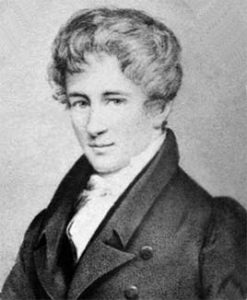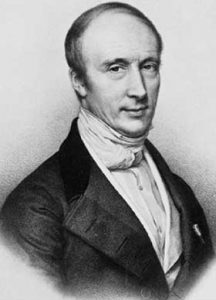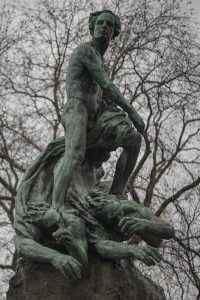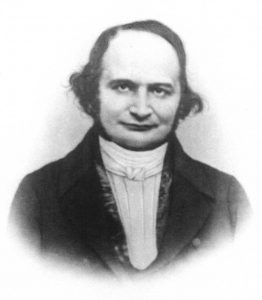
Niels Abel (1802-1829) was one of the most precocious and brilliant mathematicians in history, yet he had serious difficulties in getting recognition for the enormous quality of his work. Particularly dramatic was the episode that occurred with his fundamental results on elliptic functions. Also involved in this episode were Adrien-Marie Legendre (1752-1833) and Augustin Louis Cauchy (1789-1857).
Abel, born in Norway in 1802 and of humble origins, managed in his early twenties to obtain funding to study mathematics in Germany and France. In the summer of 1826, Abel arrived in Paris; in October of that year he sent a manuscript of his results on elliptic functions to the secretary of the Académie des Sciences, who forwarded it to Legendre and Cauchy for review. Legendre was possibly the best qualified to understand Abel’s work, since he himself had developed the theory of elliptic integrals (where, essentially, the square root of a polynomial of degree three or four appears). This work of Abel’s was precisely the right approach to Legendre’s theory: Abel had discovered that what was really interesting was not the functions defined by the elliptic integrals, but their inverse functions.


Until the beginning of the 20th century it was thought that neither Legendre nor Cauchy had reported on this work by Abel, because Cauchy had mislaid it. However, later discoveries, including Abel’s own handwritten memoir, have changed the view of these facts. The story goes as follows: Legendre, who was 74 years old at the time, had enormous difficulty understanding Abel’s handwriting, who also used a very watery ink to write his manuscript. Legendre himself recounted this in an anonymous report: “This memoir was originally entrusted to Mr Legendre, who examined it, but seeing that the writing was not very legible and the algebraic characters often badly formed, he sent it to his colleague Mr Cauchy, with the request to take charge of the report”.

Cauchy, who was 37 years old, must have appreciated the importance of that work, but unfortunately he did not pay enough attention to it. Something Abel had already guessed: “Cauchy is a fool,” he wrote to a friend, “and one cannot understand him, although he is the mathematician who today knows best how mathematics should be treated. I have done a paper on certain kinds of transcendental functions which I shall present to the Académie. I showed it to Cauchy but he will probably not look at it. And I can say without false modesty that the work is fine. I am very curious to know the Académie’s judgement”. Abel never knew. Feeling ill, he consulted several doctors who diagnosed him with tuberculosis. With no money and no hope of finding a position at a university in either Germany or France, he returned to Norway in 1827, where he died a year and a half later.
What became of the memorandum he had submitted to the Académie? As already explained, Cauchy had not given it enough consideration, although he had not lost it either. Let Legendre continue to tell the story: “Mr. Cauchy forgot for a long time the report of Mr. Abel, of which he was the depositary. It was not until March 1829 that the two commissioners learned, from the notice which one of them received from a scholar in Germany, that the memorandum of Mr. Abel, which had been presented to the Académie, contained, or should contain, some very interesting results of analysis, and that he was surprised that a report had not been made of it”.

This ” scholar from Germany ” was Carl Gustav Jacobi (1804-1851), who was also developing the theory of elliptic functions, and who came across the reference to Abel’s work in one of his later articles; Jacobi then asked Legendre: “What is this discovery of Abel’s? How is it possible that this discovery, perhaps the most important that has been made in our century, having been sent to your Académie two years ago, has escaped the attention of your colleagues?”. Once Abel’s forgotten work was brought back to life, this is what, according to Legendre, happened: “On that notice, Mr. Cauchy sought the memorandum, found it, and set out to make a report on it, but the commissioners were withheld considering that Mr. Abel had already published a part of the document, and that the author would probably go on until he made the rest appear, and that then the report of the memorandum, which could only be verbal, would be out of place. In this state of affairs we suddenly learn of the death of Mr. Abel, a very painful loss for science, and that he can now make the necessary report to preserve, if necessary, this work, which is one of the major works of its author”. Thus, Abel’s memorandum appeared, Legendre and Cauchy made their report, and it was finally published in 1841 by the Académie; unfortunately, twelve years after its author’s death.
References
A.J. Durán, Crónicas matemáticas, Crítica, Barcelona, 2018.

Leave a Reply